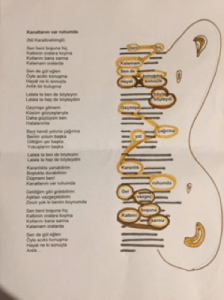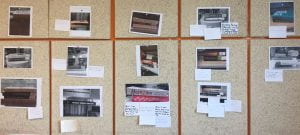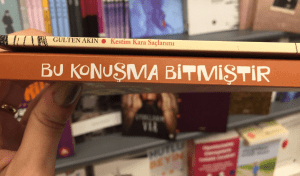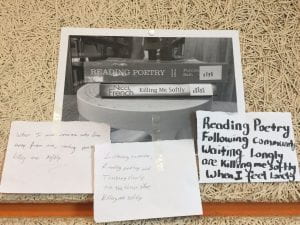“Creativity isn’t just the things we chose to put in. It is also the things we chose to leave out. Or black out.”
To learn more about blackout poems, you can watch a YouTube video featuring Austin Kleon, the author of “Steal Like an Artist” and “Newspaper Blackout”. In this video, he explains how he started creating blackout poems by erasing words from an existing text and using the remaining words to create a poem.
- To create their own poems, students will need a text such as old book pages, magazines, or newspapers to work on, and circle the words they have chosen in the order they appear on the text.
- After selecting their words, students will piece them together to form lines for their poems. Finally, they will illustrate their poems.
Allow your students to revel in the process of being creative!
Erasure poems created by English language learners:
Marron 5: She will be loved
 Eighteen trouble with her
Eighteen trouble with her

Imagine
Erasure poems created by learners of Turkish language:
Sertap Erener: Mecbursun

İmkânsız olmaz
Eğer aklımda
Sen olsan.
Bir yıl dünyayı bırak
Sonra sev.
Bin dolan
mahşere,
Ben basayım ferman
Nil Karaibrahimgil: Kanatlarım Var Ruhumda

Ben hiç kalamam
Sen de konuşma
Hayat sonuçta
Böyle
Böyleydi
Geçmişe çağırma
Yol karanlık ruhumda
Gel vazgeç
Boşuna kalbini sarma.
♥ I would like to extend my sincere gratitude to Patricia Sobral, Anna Santucci Leoni, and the class of POBS Artful Teaching (Brown University; Spring, 2016) for the inspiration.











 using an interdisciplinary approach. My goal is to facilitate language acquisition through the integration of arts and technology, and to share effective classroom practices through this blog.
using an interdisciplinary approach. My goal is to facilitate language acquisition through the integration of arts and technology, and to share effective classroom practices through this blog.